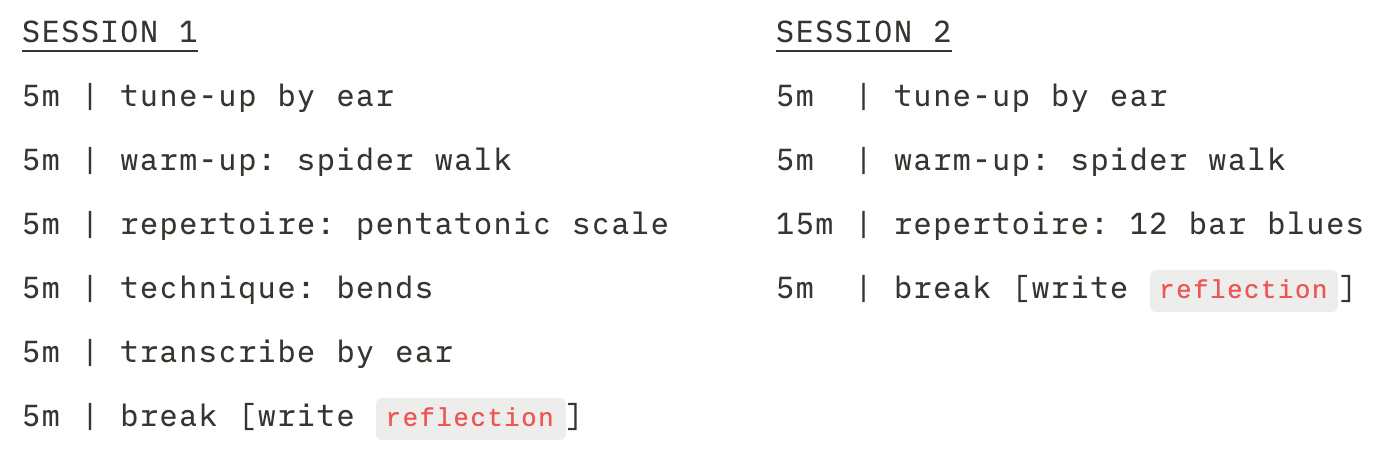Paradox of choice is a tricky motherfucker. Do not go in blind when you sit down to practice. Create a structured practice routine and consistently edit it to keep yourself on the edge of your ability. Decide what you want to learn and modify the routine to reflect the skills involved. Record and reflect on your progress. It's your ride. Have fun with it.
This is the process of you putting in the work.
For instance, in an interview with Charles Weiner, Richard Feynman said that for him (1973) the paper’s not just a record of work done in his head:
Weiner: (Referring to Feynman’s journals) And so this represents the record of the day-to-day work.
Feynman: I actually did the work on the paper.
Weiner: That's right. It wasn’t a record of what you had done but it is the work.
Feynman: It’s the doing it — it’s the scrap paper.
Weiner: Well, the work was done in your head but the record of it is still here.
Feynman: No, it’s not a record, not really, it’s working. You have to work on paper and this is the paper. OK?
Start from the bottom up. This project is based on the fundamentals. You have to understand the basics. If you can’t rderive concepts from the basics as you need them, you’re lost. You’re just memorizing. If want to be able to use the guitar as a tool to play music this is how you start. Real knowledge is intrinsic, and it’s built from the ground up.
Don't pigeonhole yourself to one resource when building out your routine. Look at multiple sources — books, articles, interviews, videos, and course structures. Try it out, evaluate it, and adapt it to your routine. Find the balance between research and putting the work in. Remember, reading is faster than listening and doing is faster than watching. Take inspiration from other fields. Go down the rabbit hole.
Follow the principles of deliberate practice and a time management method to stay focused. I recommend the Pomodoro technique. Set a timer to track the 25 min focused practice and 5 min break sessions. Play along to a track, improvise, or mess around on your break. Anything goes.
Time spent on each section is up to you. I recommend working on each block for a minimum of 5 minutes. It's OK to skip sections and/or organize them in an A/B routine where you split up the blocks and alternate them every other day. Find your optimal time where you get in the flow. For most it's usually around 15 minutes. Here's two examples:

You determine your path. Try out a bunch of different things. Mess around playing riffs, chords, play with a pick, fingerpick, or play with a slide. Find out what sounds and feels good — follow that. There is no "right way."
Here's the template of the practice routine. Edit and create your own routine.
I recommend reading my guides on how to create a practice habit and how to practice deliberately. It's everything you need to know to learn how to practice playing guitar.
Good luck.

